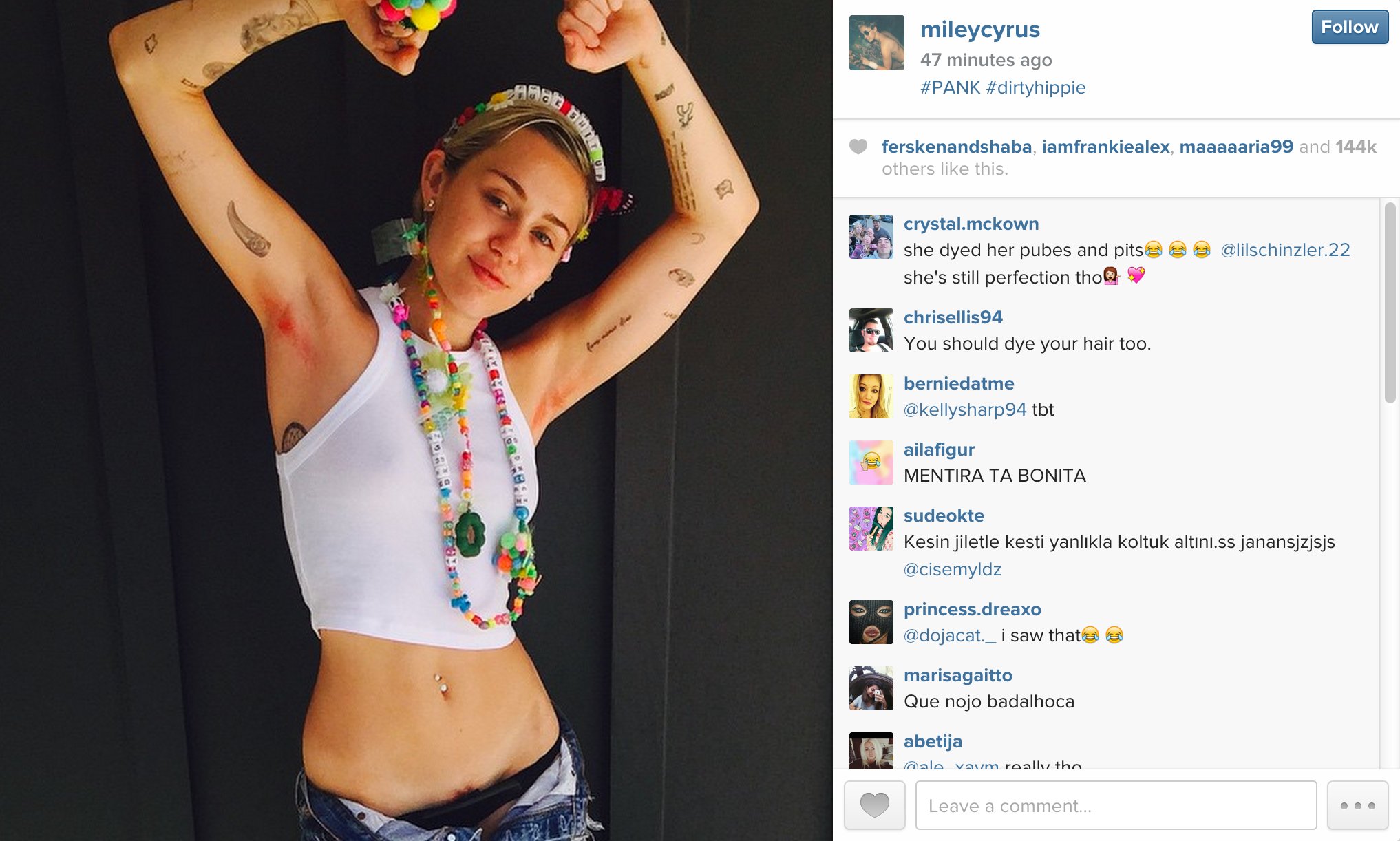How growing out and dyeing armpit hair had women breaking beauty standards in 2015
By Sarine Gulerian
@sarinegulerian
In 2015, women were partaking in a new hair trend. No, it wasn’t an ombre or a balayage.
Women started dyeing their underarm hair bright and eccentric colours, giving a new meaning to, “does the carpet match the drapes?” or in this case, the blinds. Even celebrities such as Miley Cyrus took part in the rebellion.

“It’s a little f-you kind of action,” said Katie Warfield, faculty member at Kwantlen Polytechnic University, Director of the Visual Media Workshop and Lead Researcher at Making Selfies/Making Self.
“Women have a history of using guerrilla gender expressions to challenge gender norms…Obviously it’s not going to change the wage gap but little movements often act as social grease so that when big efforts occur society has been conditioned in everyday encounters to be more prepared for the discomfort of change,” she said.
Last week, a feminist teen from Texas, Suraiya Ali broke the internet after she tweeted a photo of herself in her underwear—belly exposed with a fluffy treasure trail visible.

Twitter exploded. Some in support, others aghast that a woman dare be so bold.
The list of insecurities women concern themselves with used to be blank; now it’s ever growing, slowly taking away our sense of self-worth.The definition of beauty didn’t always encompass the concept of hairlessness.
So, why did we start the rigorous, costly, and agonizing process of removing our body hair?
“Think of hair shaving just like fashion. Why has fashion lasted so long? Because there is money to be made from it—it’s prosperous,” said Warfield.
One Gillette Venus razor handle costs $14.97—six razor refills costing $30. You change your razor head, at least (depending on your usage) twice a month. This means, at the lowest possible cost, you spend almost $140 a year to shave.
Those who prefer a waxing usually go once a month to up to keep up the smoothness. A simple underarm and leg wax averages out to $80 a month. That means you’ve spent, at least, $960 a year to warrant off the basics of unwanted body hair. All this still overlooks the bikini, Brazilian, the upper arms, lower arms, the eyebrows, the upper lip, and sometimes even the sideburns and lower back.
We put ourselves through razor burn, in-grown hairs, itchy re-growth, not to mention the grueling hot pain of tearing roots out of their skin when waxing in the front, the back and even the crack—just for fashion.
WHY WE DO THIS AND WHEN IT BEGAN
Research links the precise birth of the silky smooth woman to May of 1915 when Harpers Bazaar published a black and white ad depicting a woman happily waving with a smooth under arm. Below the photograph is a pitch for X Bazin Depilatory Powder which “has been used by women of refinement for generations for removal of objectionable hair.”
Warfield doubts that the hairless trend is exclusive to the 20th century.
“Women’s pubic hair was removed from paintings over 200 years ago. I think it’s just less publically taboo.”
She highlights that we’ve actually been removing hair for centuries for both hygienic and aesthetic reasons. For example, shaving your head to get rid of lice.
“I know that threading is over 6,000 years old and was originally practiced in what are now the Arab nations and Asia. It was often a sort of ‘coming of age’ practice and done for special occasions like weddings.” So, hair-removal is not exclusive to the 20th century and beyond.
Hair trends are culturally relative, heavily influenced by the media and morph with pop-culture, “Think of the association of hair with sex appeal in the 1970s–Tom Sellick’s moustache, curly chest hair, and then Arnold Schwarzenegger introduced the slick and monstrously muscular chest in the late ‘80s that led to a shift towards less chest hair,” said Warfield.
She points out that we’ve always been obsessed with modifying ourselves to see how much we can alter our fate, “It’s just one of the many elements of body modification that have long histories and are deeply linked to gender norms,” she said, “Just like weight control, hair coloring, makeup application, and other types of body modifications like piercings, tattoos, etcetera: we’ve always been interested and enamoured with self-modification.”
The hairy truth is that this is popular trend is here to stay. A political statement of defiance is as simple as growing out your armpit hair.

Sarine Gulerian likes poorly timed jokes, alcohol and politics—preferably together. She is clumsy, spatially unaware and exceptionally good at embarrassing herself at all sorts of occasions.



